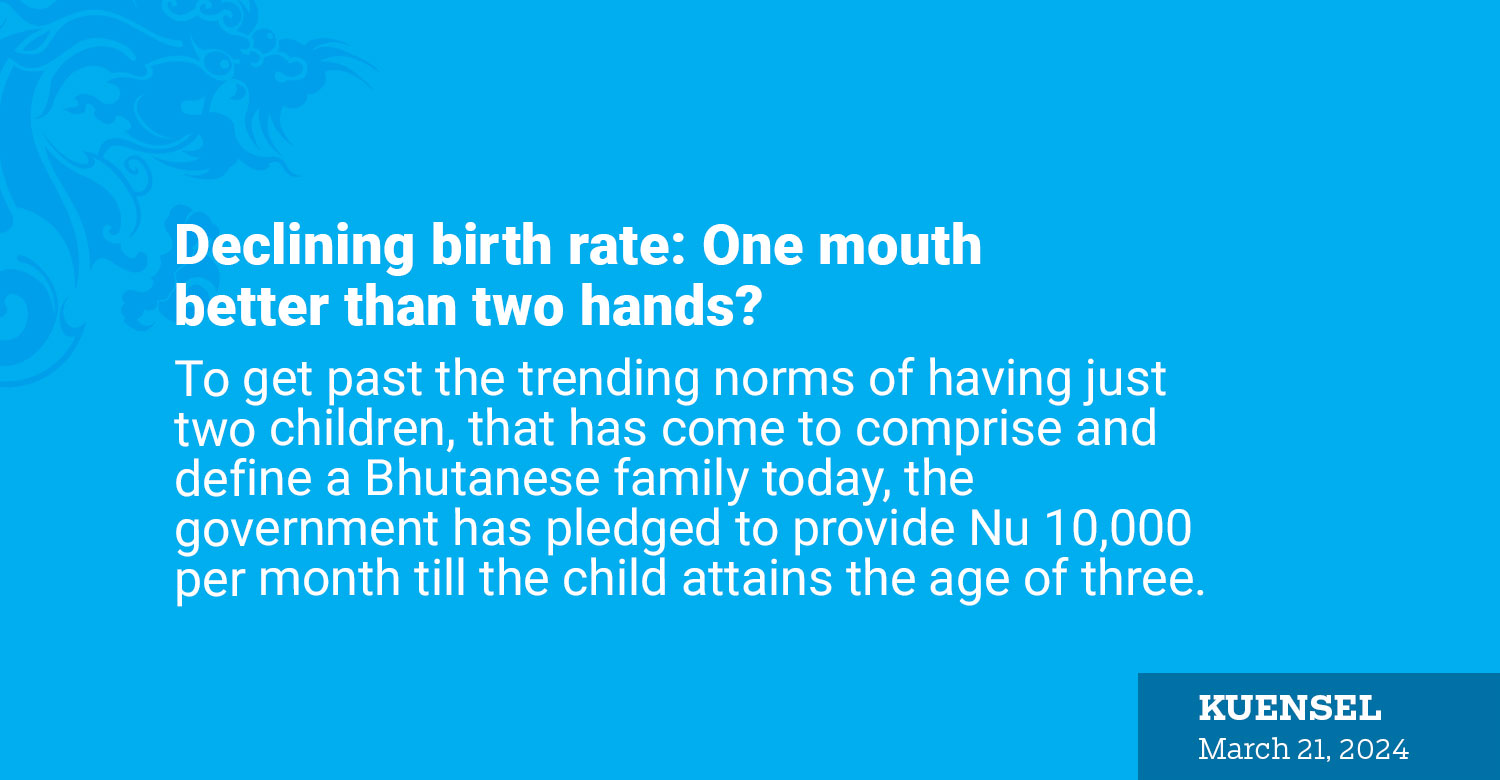Sherab Lhamo
To get past the trending norms of having just two children, that has come to comprise and define a Bhutanese family today, the government has pledged to provide Nu 10,000 per month till the child attains the age of three.
However, looking at the statistics, and the conscience among the child-bearing and child-rearing Bhutanese, it might require more than monetary incentives to have larger families today.
The country’s fertility rate had been dropping from 6.6 births per woman in 1971 to 1.866 births per woman in 2023. However, by contrast, the contraceptive prevalence rate in the country had steadily increased from 18.8 percent in 1994 to 65.6 percent in 2010.
Nowadays, contraceptives such as condoms are distributed free and easily found in medical stores in the country. Women also had access to a diverse type of contraceptives.
“It is a trend to have two children,” a father said. “When both the couple are working it is very hard to raise more children. In today’s economy, two children are the best choice,” he said.
“During my time there used to be family planning campaigns which convinced me that two kids were more than enough,” a 45-year-old mother of two from Gelephu said.
But the bigger problem was that Bhutan still had not been able to reach the replacement rate of 2.1 percent.
According to an UNFPA report, one-half of the world’s population live in countries where the total fertility rate is below 2.1 births per woman. The gap tended to be larger for highly educated women, who found it more difficult to combine their career with their family life and aspirations.
Thinley Yangchen Dorji, a working mother of two, said most women prefer not to have more than two kids or have none as being a mother. “It’s a trade-off between your work and having a kid.”
Another factor was high levels of stress that led to hormonal imbalance in women, leading to difficulty in conceiving.
A single working mother shared she was having a difficult time raising her three children, and it was expensive to send her kids to school.
While it was difficult to find a nanny or babysitter, it was equally difficult to trust them with children and parents found it difficult in leaving their children with caregivers while they were at work.
In addition, the cost of hiring a babysitter had increased over time from Nu 1,500 to 3,000, a month to Nu 20,000 for 8 to 9 hours of service.
The government could provide child care support including establishing crèche and a nursery where young children are cared for during the working days, flexi working arrangements, among others, said National Commission for Women and Children’s (NCWC) executive director, Ugyen Tshomo.
Deki, a 64-year-old mother of seven, said during her times there were no contraceptives available like we do today. This resulted in having children throughout her childbearing years until menopause.
Ugyen Tshomo said ‘in the past people lived in an extended family, helping in providing financial support, child care support, and others.’
At that time the source of income for the family was agriculture, where two hands were better than a mouth to feed, as farms needed helping hands. It was an investment for the family.
Family planning campaigns were first launched in 1990, by the government, across the country with the aim to control the population of the district and the country as a whole. During the campaign people had the choice to undergo a permanent method of family planning operation.
The campaign provided people with options for tubectomy, vasectomy and copper-T insertion, and it was also targeted towards men to get a vasectomy.
The United Nations Population Fund (UNFPA)supported family planning spreading awareness among the people for a “small family, happy family”.


